Charles M. Kozierok The TCP-IP Guide
Подождите немного. Документ загружается.

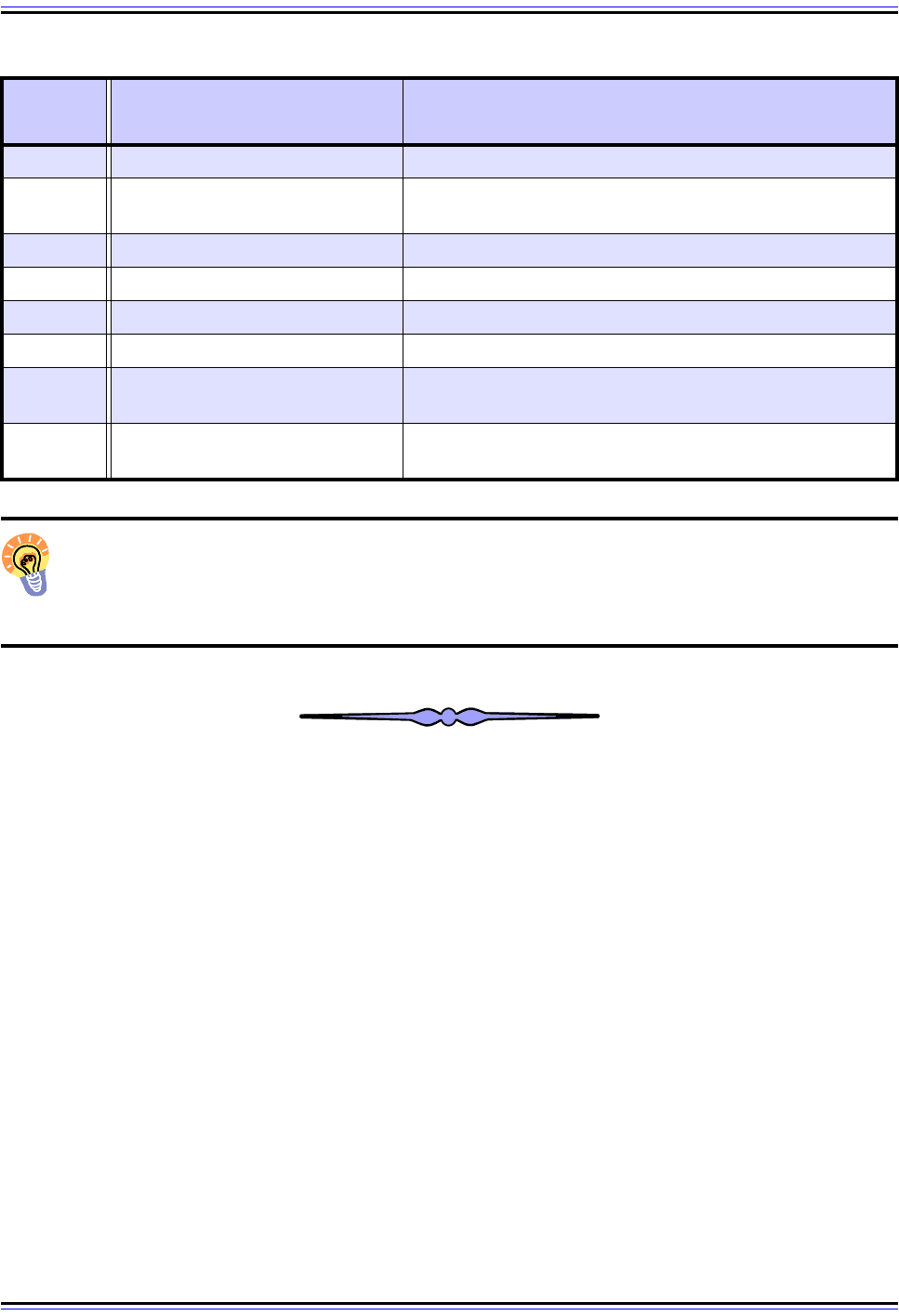
The TCP/IP Guide - Version 3.0 (Contents) ` 1521 _ © 2001-2005 Charles M. Kozierok. All Rights Reserved.
Key Concept: Each command sent by the device acting as the client in an NNTP
connection results in the server returning a reply. NNTP replies consist of a three-
digit reply code and a string of descriptive text; they are modelled after those of
SMTP, and in turn, FTP.
441 posting failed POST command failed.
450
authorization required for this
command
Response sent when server requires authentication but
client has not yet authenticated.
452 authorization rejected Failed authentication.
480 transfer permission denied Response to CHECK if transfer is not allowed.
500 command not recognized Bad command.
501 command syntax error Bad syntax in command.
502
access restriction or permission
denied
Permission denied; sent if the client has not properly
authentication but the server requires it.
503
program fault - command not
performed
General fatal error message.
Table 273: NNTP Reply Codes (Page 3 of 3)
Reply
Code
Reply Text Description
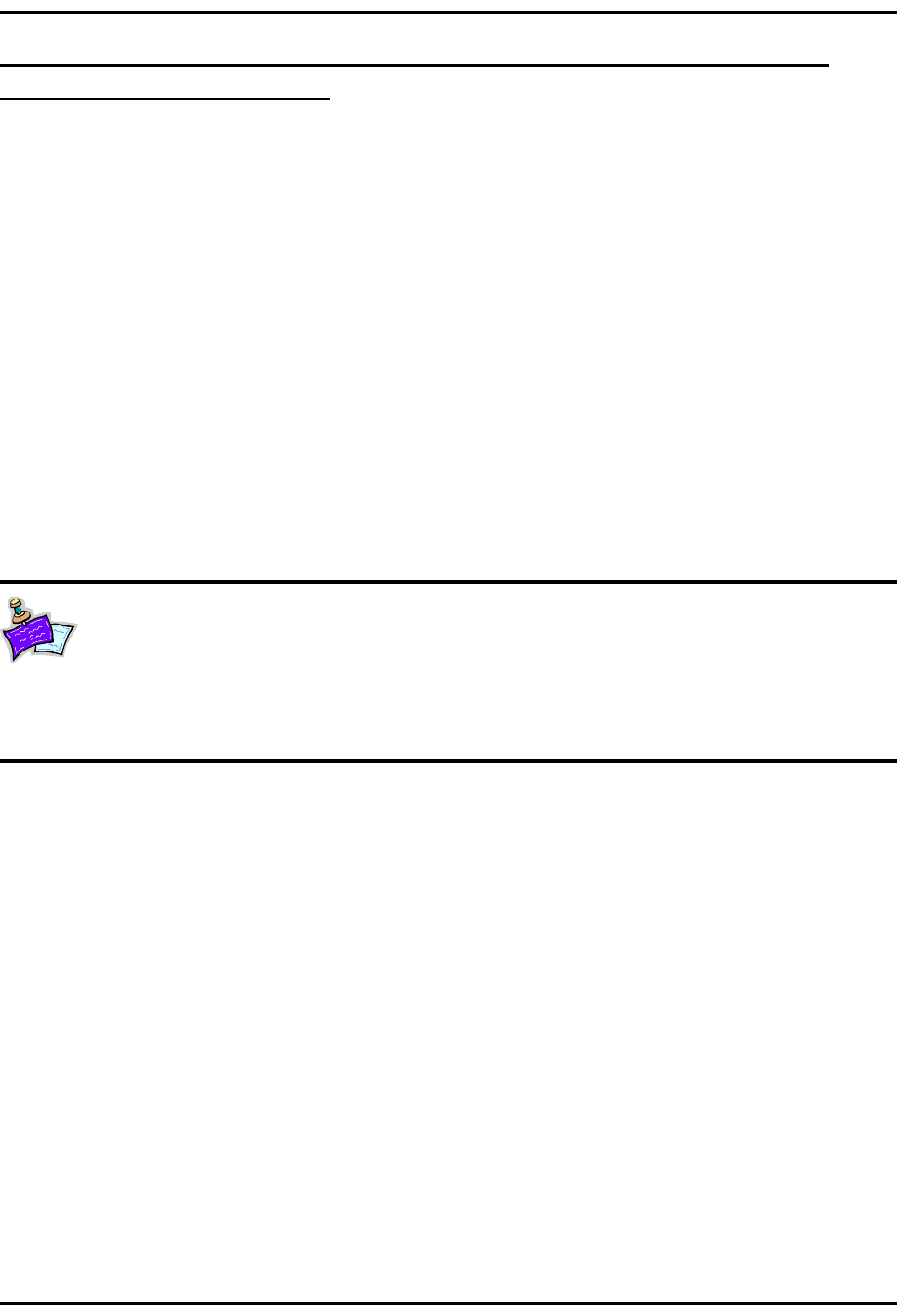
The TCP/IP Guide - Version 3.0 (Contents) ` 1522 _ © 2001-2005 Charles M. Kozierok. All Rights Reserved.
TCP/IP World Wide Web (WWW, "The Web") and the Hypertext
Transfer Protocol (HTTP)
So finally, we come to the Big Kahuna. ☺ In my overview of file and message transfer
protocols, I said that the World Wide Web was “almost certainly” the most important TCP/IP
application. If anything, I was probably understating the case. The Web is not only quite
clearly the most important TCP/IP application today, it is arguably the single most important
application in the history of networking, and perhaps even computing as a whole.
Does this sound a little melodramatic? More than a little? Perhaps, but consider what the
Web has done in the decade or so that it has been around. It has transformed not only how
internetworks are used, but in many ways, has changed society itself. The Web put the
Internet “on the map”, so to speak, moving it from the realm of technicians and academics
and making it a big part of the mainstream world.
In this section I describe the World Wide Web in two subsections. The first discusses the
Web and the concepts behind hypertext and hypertext documents in general terms. The
second explains the operation of the all-important Hypertext Transfer Protocol (HTTP), the
TCP/IP application layer protocol that makes the Web work.
Note: As I've said in many other section headers, I simply cannot do complete
justice here to a topic as large as the World Wide Web. There have not only been
whole books written about the Web, there are shelves full of such books. Due to
the already large size of this Guide, and its overall focus on how protocols and technologies
work, I must contain my enthusiasm and limit my scope to providing an overview of what
the Web is all about, while focusing on the nuts and bolts of HTTP itself.
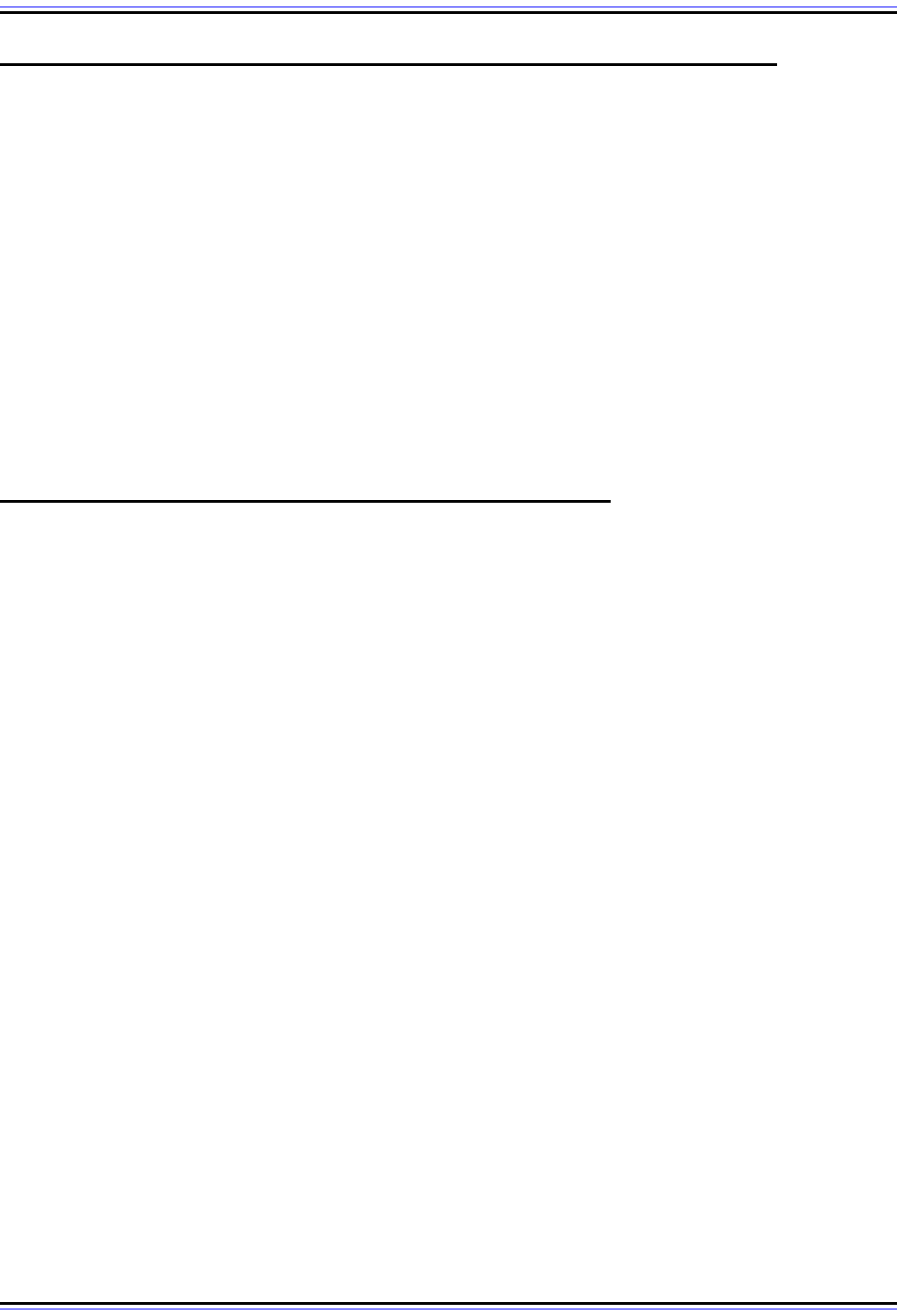
The TCP/IP Guide - Version 3.0 (Contents) ` 1523 _ © 2001-2005 Charles M. Kozierok. All Rights Reserved.
TCP/IP World Wide Web and Hypertext Overview and Concepts
The World Wide Web expands the concepts of messaging beyond the limits of simple text
file transfer of e-mail, FTP and Usenet. Its power is in its combination of hypertext, a system
that allows related documents to be linked together, its rich document format that supports
not just text but graphics and multimedia, and the special protocol that allows efficient
movement of those media. The result is a powerful system that once introduced, caught on
almost immediately amongst everyone from large companies to individuals, and in a few
short years came to dominate all other applications on the Internet.
In this section, I take a high-level, summarized look at the concepts behind the World Wide
Web. I begin with a short overview and history of the Web and hypertext, and a discussion
of the components that comprise the Web system. I briefly describe the documents and
media used on the Web and explain the importance of the Hypertext Markup Language
(HTML). I conclude with an overview of how documents are addressed on the Web using
Uniform Resource Locators (URLs).
World Wide Web and Hypertext Overview and History
At one point, I considered putting my section on the Web in a distinct location, separate
from the discussion of other file and message transfer protocols. It didn’t “seem” at first like
a message transfer protocol to me. But I realized that, boiled down, the Web really is just
another way of storing information and then transferring it from one computer to another. A
question immediately struck me: if this is the case, what was so special about the Web that
caused it to become popular in a way that no prior messaging applications ever had?
There is no simple one-word answer to this question. However, if I had to give one anyway,
it would be this: hypertext. Sure, applications like e-mail and Usenet allow users to send
and receive information, and FTP lets a user access a set of files on a server. But what
these methods lack is any way of easily representing the relationship between documents
or providing a way of moving from one to another. Highly simplified, hypertext does exactly
that: it allows the creator of a document to include links to related information either
elsewhere in that document or in others. With the appropriate software, a user can easily
move from one location to another.
Big deal? In fact, this is more important than it may initially seem. Without some way of
linking documents together, they remain in unconnected “islands”. In some ways, hypertext-
linked documents are to unlinked documents what networked computers are to those that
are not networked. Consider the difference between this Guide and a hard-copy book; if I
mention a topic in passing I can provide a link to it; a printed book cannot. Hopefully you’ve
already discovered the advantages that this offers. ☺
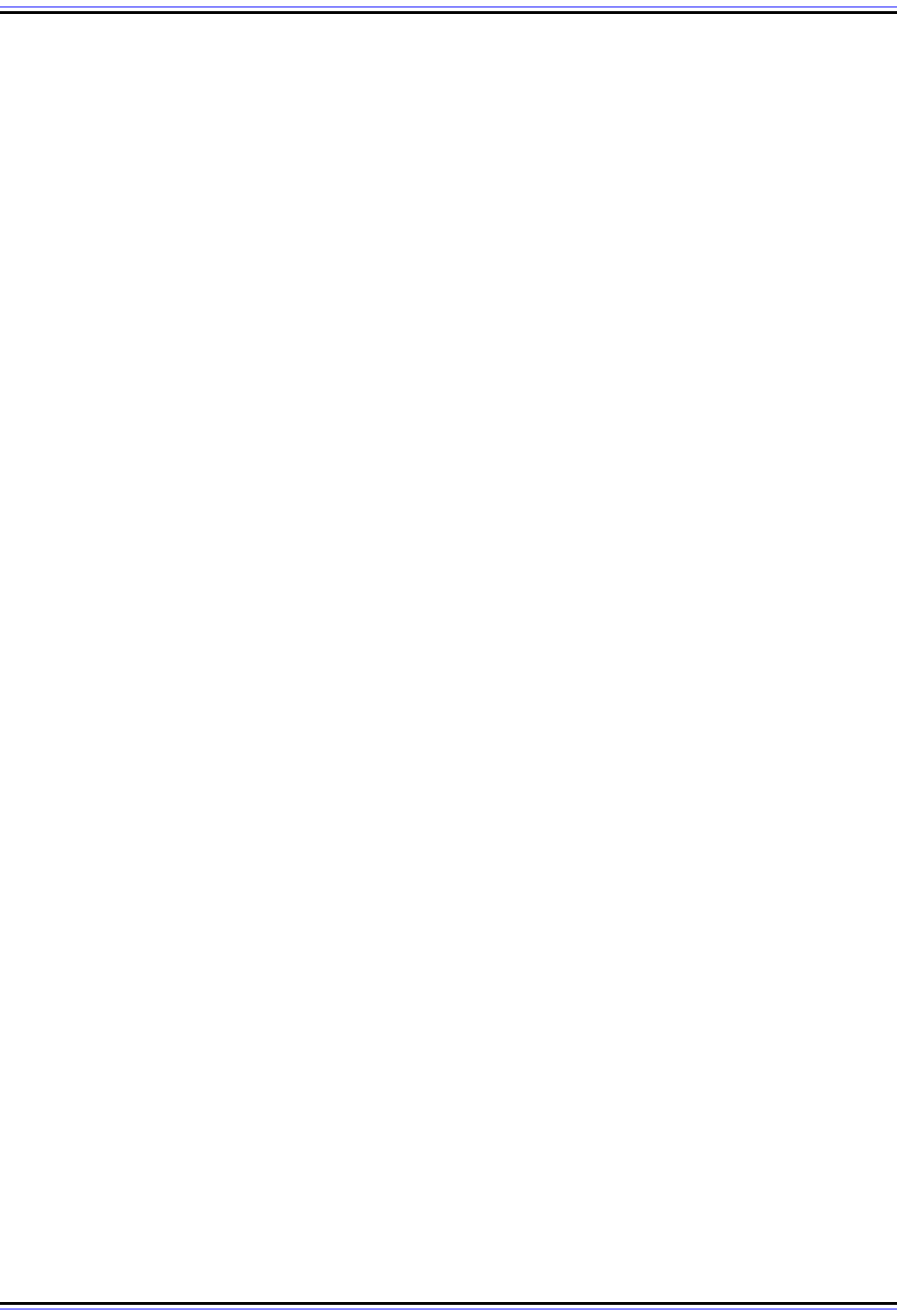
The TCP/IP Guide - Version 3.0 (Contents) ` 1524 _ © 2001-2005 Charles M. Kozierok. All Rights Reserved.
History of Hypertext
The ideas behind hypertext actually go back far beyond the Web and even electronic
computers. Vannevar Bush (1890-1974) is generally credited with introducing the idea in his
1945 description of a theoretical device called the Memex, which was intended to be used
to store and retrieve documents. He described the concept of a trail that would link together
related information to make it easier to organize and access the information in the device.
Bush's ideas were used as the basis of the work of several researchers who followed. One
of these was Ted Nelson, who coined the term “hypertext” and in 1960, first described a
system called Xanadu, which is considered one of the original hypertext software models.
The history of the World Wide Web itself goes back to 1989 at CERN, the European Organi-
zation for Nuclear Research, in Geneva. (The acronym stands for Conseil Européene pour
la Recherche Nucléaire, the French name of the organization.) Many of the projects under-
taken at CERN were large, complex, and took many years to complete. They also involved
many scientists who had to work with and share related documents.
Development and Growth of the Web
A researcher at CERN, Tim Berners-Lee, proposed the idea of creating a “web” of electron-
ically-linked documents. The rapidly-growing Internet was the obvious conduit for this
project. He designed the first (very crude and simple) version of the Hypertext Transfer
Protocol (HTTP) for TCP/IP in 1990. He was also responsible for developing or co-devel-
oping several of the other key concepts and components behind the Web, such as Uniform
Resource Identifiers (URIs) and the Hypertext Markup Language (HTML).
The ability to link documents and files together had tremendous appeal, and it took little
time before creative individuals found many different uses for this new technology. The
early 1990s saw a flurry of development activity. Web server and client software was
developed and refined, and the first graphical Web browser, Mosaic, was created by the
National Center for Supercomputer Applications (NCSA) in 1993. (The developer of this
program, Marc Andreesen, eventually formed Netscape Communications.)
Once the Web started to form, it grew very quickly indeed. In fact, to call the growth of the
Web anything but “explosive” would not do it justice. In early 1993, there were only 50
active HTTP Web servers. By late 1993, there were over 1,000. By late 1995, thousands of
new Web sites were coming online every day, and HTTP requests and responses had
overtaken all other TCP/IP application traffic. By the end of the decade there were millions
of Web sites and over a billion documents available on the Web.
The World Wide Web Today
While the rapid growth in the size of the Web is amazing, what is even more fascinating is
its growth in scope. Since you are reading a Guide about networking, you are most likely a
Web user, and familiar with the incredible array of different types of information you can find
on the WWW today. Early hypertext systems were based on the use of only text
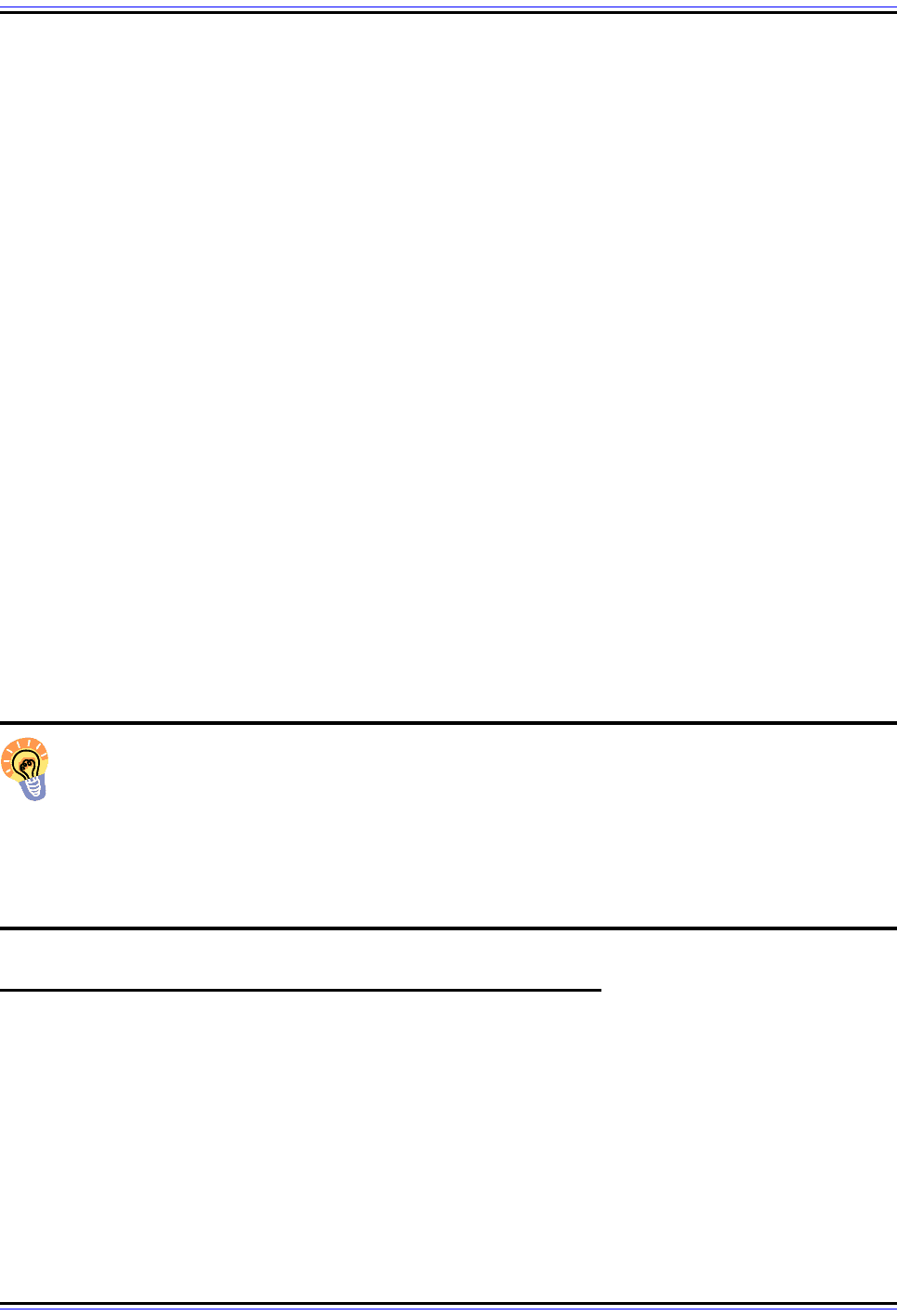
The TCP/IP Guide - Version 3.0 (Contents) ` 1525 _ © 2001-2005 Charles M. Kozierok. All Rights Reserved.
documents; today the Web is a world of many media including pictures, sounds and
movies. The term hypertext has in many contexts been replaced with the more generic
hypermedia—functionally, if not officially.
The Web has also moved beyond simple document retrieval to providing a myriad of
services. A Web site can serve much more than just documents, allowing users to run
thousands of kinds of programs. This enables everything from online shopping to enter-
tainment. Web sites are also blurring the lines between different types of applications,
offering Web-based e-mail, Web-based Usenet access, bulletin boards and other inter-
active forums for discussion, and much more.
The Web has had an impact on both networking and society as a whole that even its most
enthusiastic early fans could never have anticipated. In fact, the Web was the ultimate “killer
application” for the Internet as a whole. In the early 1990s, big corporations viewed the Web
as an amusing curiosity; by the end of the decade it was for many a business necessity.
Millions of individuals and families discovered the wealth of information that was at their
fingertips, and Internet access became for many another “utility”, like telephone service. In
fact, the huge increase in Web traffic volume spawned the spending of billions of dollars on
Internet infrastructure.
The “dot-com collapse” of the early 21st century took some of the wind out of the Web's
sails. The incredible growth of the Web could not continue at its original pace, and has
slowed somewhat. But the Web as a whole continues to expand and mature, and will likely
be the most important information and service resource on the Internet for some time to
come.
Key Concept: The World Wide Web (WWW) began in 1989 as a project designed to
facilitate the representation of relationships between documents and the sharing of
information between researchers. The main feature of the Web that makes it so
powerful is hypertext, which allows links to be made from one document to another. The
many benefits of the Web caused it to grow in only a few short years from a small appli-
cation to the largest and arguably most important application in the world of networking; it is
largely responsible for bringing the Internet into the mainstream of society.
World Wide Web System Concepts and Components
Hypertext is the main concept that makes the World Wide Web more than just another
message transfer system. However, the idea behind hypertext had been around for
decades before the Web was born, as had certain software products based on that idea.
Obviously, more than just a concept is needed for an idea to be developed into a successful
system.
The Web became a phenomenon because it combined the basic idea of hypertext with
several other concepts and technologies, to create a rich, comprehensive mechanism for
interactive communication. This system today encompasses so many different concepts
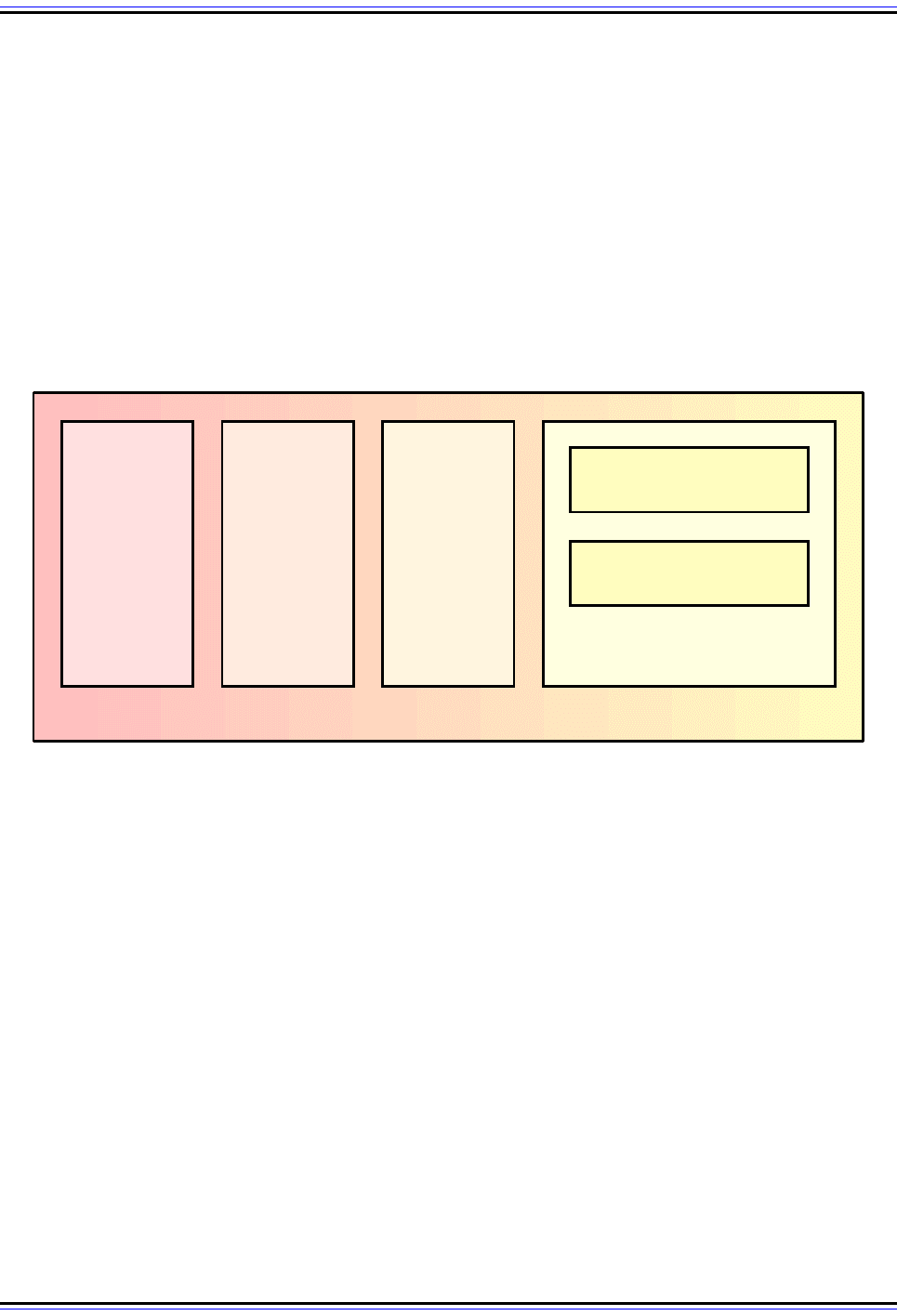
The TCP/IP Guide - Version 3.0 (Contents) ` 1526 _ © 2001-2005 Charles M. Kozierok. All Rights Reserved.
and software elements, and is so integrated with other technologies, that it's hard to find
any two people who agree on what exactly comprises the Web, and which are most critical
parts.
For example, one of the keys to the success of the World Wide Web is undeniably the
combination of the TCP/IP internetworking protocol suite and the Internet infrastructure that
connects together the computers of the world. Is the Internet then an essential component
of the World Wide Web? In many ways it is; and in fact, due to how popular the Web is
today, it is common to hear people call the Web “the Internet”.
The functional components of the World Wide Web are illustrated in Figure 314. Let’s take a
look at them in a bit more detail now.
Major Functional Components of the Web
We know that equating the Web to the entire Internet is not a precise use of terms, but it
shows how important the Web is and how closely it is tied to the Internet. Still, while the
Internet and TCP/IP are obviously important parts of the Web's success, they are generic in
nature. When it comes to defining the World Wide Web system itself more specifically, three
particular components are usually considered most essential:
☯ HyperText Markup Language (HTML): A text language used to define hypertext
documents. The idea behind HTML was to add simple constructs, called tags, to
regular text documents, to enable the linking of one document to another, as well as to
allow special data formatting and the combining of different types of media. HTML has
become the standard language for implementing information in hypertext, and has
spawned the creation of numerous other related languages.
Figure 314: Major Functional Components of the World Wide Web
The World Wide Web (WWW)
Web Hardware
and Software
Web Server Hardware
and Software
Hypertext
Markup
Language
(HTML)
Web Client Hardware
and Browser Software
Hypertext
Transfer
Protocol
(HTTP)
Uniform
Resource
Identifiers
(URIs)
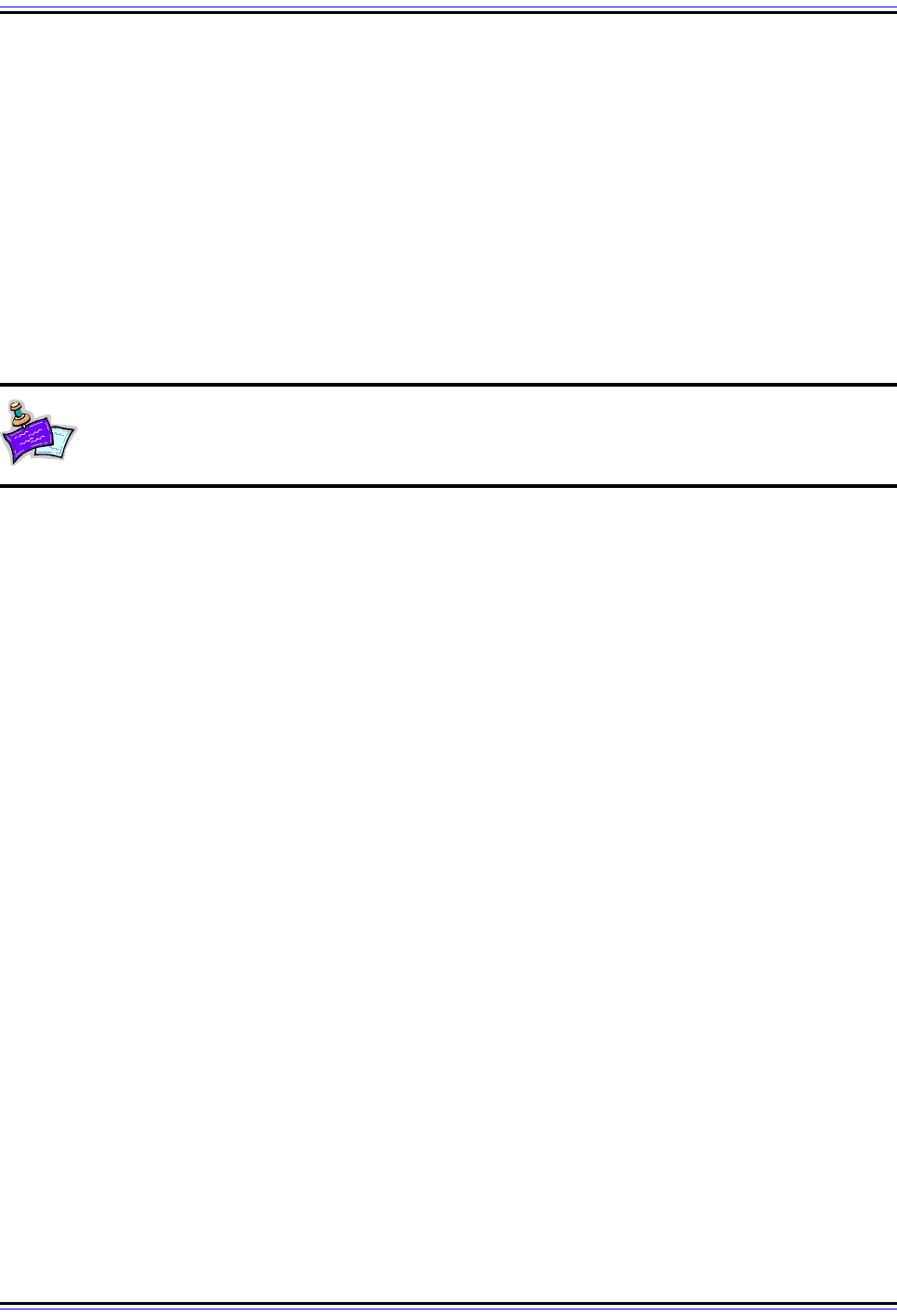
The TCP/IP Guide - Version 3.0 (Contents) ` 1527 _ © 2001-2005 Charles M. Kozierok. All Rights Reserved.
☯ Hypertext Transfer Protocol (HTTP): The TCP/IP application-layer protocol that
implements the World Wide Web, by enabling the transfer of hypertext documents and
other files between a client and server. HTTP began as a very crude protocol for trans-
ferring HTML documents between computers, and has evolved to a full-featured and
sophisticated messaging protocol. It supports transfers of many different kinds of
documents, streaming of multiple files on a connection, and various advanced features
including caching, proxying and authentication.
☯ Uniform Resource Identifiers (URIs): A method of defining labels that identify
resources on an internet so that they can be easily found and referenced. URIs were
originally developed to provide a means by which the users of the Web could locate
hypertext documents so they could be retrieved. URIs are actually not specific to the
Web, though they are most often associated with the Web and HTTP.
Note: Uniform Resource Locators (URLs) are a subset of Uniform Resource
Identifiers (URIs). The terms are often used interchangeably in World Wide Web
discussions.
All three of these were created and developed at around the same time, and taken together
represent the key technologies that define the World Wide Web. The next two topics in this
section describe HTML and the use of URIs in the context of the World Wide Web. HTTP is
really the heart of the Web and is covered extensively in its own section later in this Guide.
Web Hardware and Software
These three main components are supplemented by a number of other elements that play
“supporting roles” in rounding out the system as a whole. Chief among these are the
hardware and software used to implement client/server communication that makes the Web
work: Web servers and Web browsers.
Web servers are computers that run special server software to allow them to provide
hypertext documents and other files to clients who request them. Millions of such machines
around the world now serve as a virtual, distributed repository of the enormous wealth of
information that the Web represents.
Web browsers are HTTP client software programs that run on TCP/IP client computers to
access Web documents on Web servers. These browser programs retrieve hypertext
documents and display them, and also implement many of the Web's advanced features,
such as caching. Today's browsers support a wide variety of media, allowing the Web to
implement many different functions aside from simply hypertext document transfer.
Examples include displaying images, playing sounds and implementing interactive
programs.
Last but certainly not least, it is the users of the Web that are perhaps its most important
component. This is sort of “cheating”, as this is in some ways like defining the Internet as
being part of the Web. At the same time, I feel that user involvement has had more of a role
in shaping the development of Web technology than any other networking application. The
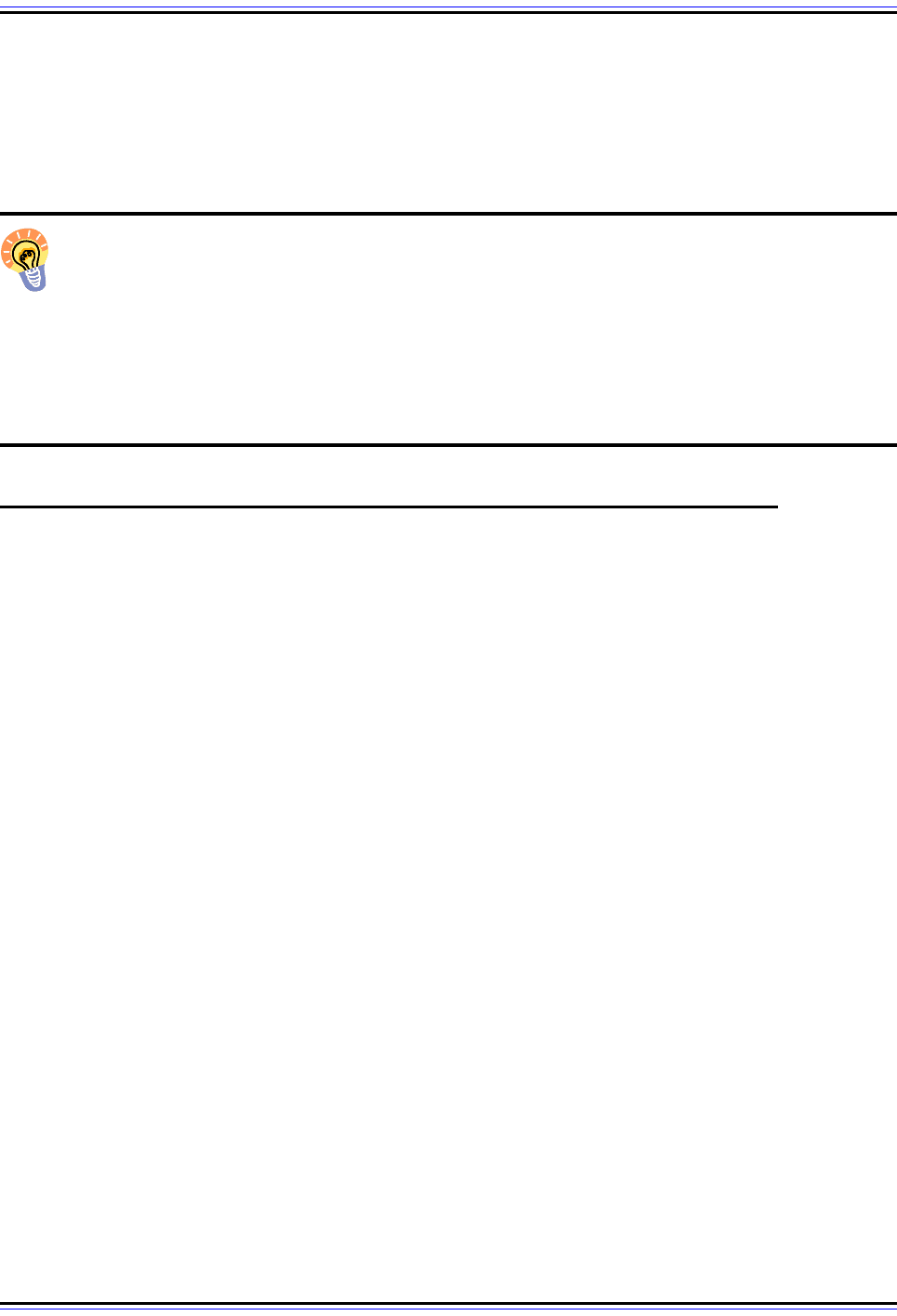
The TCP/IP Guide - Version 3.0 (Contents) ` 1528 _ © 2001-2005 Charles M. Kozierok. All Rights Reserved.
Web began as a simple means of exchanging documents; today it has grown to encompass
thousands of different applications and services, largely as a result of the creativity of users.
Content providers have pushed the boundaries of what the Web can do by creating new
ideas for information and services, to satisfy the insatiable demands of the end user
community.
Key Concept: The World Wide Web is a complete system that is comprised of a
number of related components, of which three are most essential. The first is
Hypertext Markup Language (HTML), which describes how hypertext documents are
constructed; HTML is what allows links between documents to be represented. The second
is the Hypertext Transfer Protocol (HTTP), the application layer protocol that moves
hypertext and other documents over the Web. The third is the Uniform Resource Identifier
(URI) mechanism, which provides a consistent means of identifying resources, both on the
Web and more generally on the Internet as a whole.
World Wide Web Media and the Hypertext Markup Language (HTML)
We've seen in the last two topics that the World Wide Web is based around the central
concept of hypertext. The prefix “hyper” usually means “above” or “beyond”, and thus
hypertext is like text, but goes beyond it in terms of functionality. Documents written in
hypertext are similar to regular text files, but include information that implements hypertext
functions. These are, of course, usually called hypertext documents or hypertext files.
The extra information in a hypertext document is used to tell the computer program that
displays the file to a user how to format it. This information takes the form of special instruc-
tions that are interspersed with the actual text of the document itself, which are written
according to the syntax of a defining language. This addition of extra elements to the
content of a document is commonly called marking up the document.
Overview of HTML
The standard language used by the World Wide Web is thus called the Hypertext Markup
Language (HTML). HTML is one of the three primary system components of the World
Wide Web, and was invented in 1990 by the creator of the Web, Tim Berners-Lee. It was
not created in a vacuum; rather, it is a specific application of the general concept of a
markup language that is described in ISO standard 8879:1986: Standard Generalized
Markup Language (SGML).
The idea behind a markup language is to define special items that provide information to
the software displaying the document about how it should be presented. For the purposes
of hypertext, the most basic type of information in a document is a special instruction that
specifies how one document can be linked to another—after all, this linking process is the
defining attribute of hypertext.
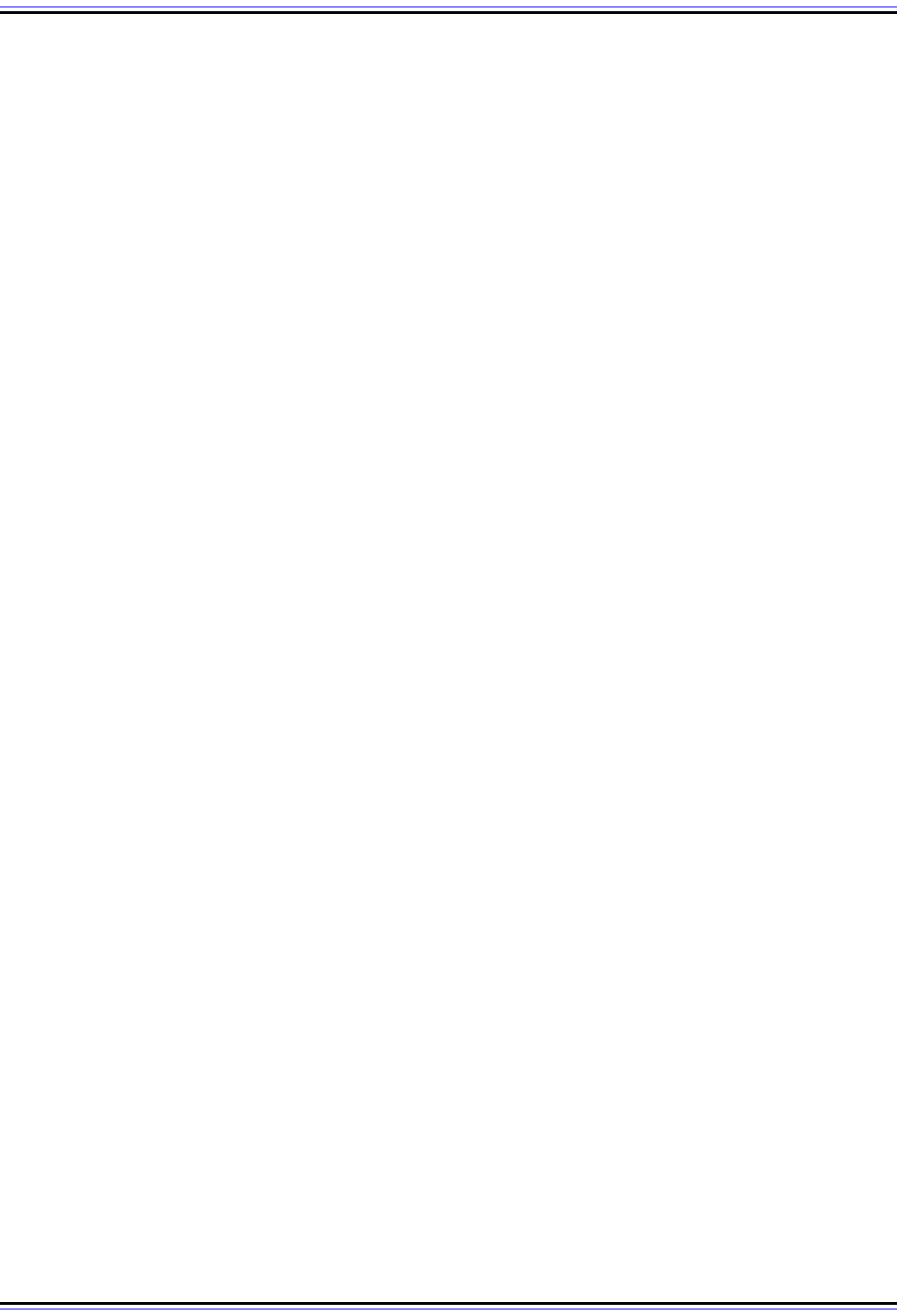
The TCP/IP Guide - Version 3.0 (Contents) ` 1529 _ © 2001-2005 Charles M. Kozierok. All Rights Reserved.
However, HTML goes far beyond just this; it defines a full set of text codes for describing
nearly every aspect of how a document is shown to a user. This includes instructions for
formatting text (such as defining its color, size and alignment), methods for displaying
tabular data, specifications for how to present images and other media along with the
document, interactive forms and much more. In theory, the language is only supposed to
define the document and leave up to the browser how it should be displayed, but in
practice, modern HTML documents also usually contain rather specific instructions for how
their information should be presented.
To do justice to HTML, I would have to devote several dozen pages to the subject. I have
decided not to do this, because even though HTML is an important part of the Web, it is
actually not that important in understanding how the Web works. Knowing HTML is
essential if you are writing Web content, and is also critical if you want to understand how to
write Web software. Perhaps ironically though, to the actual mechanisms that make the
Web work, such as HTTP, “a document is a document”. HTTP is not designed under the
assumption that it will transfer HTML, and servers in most cases do not even look at the
contents of an HTML file—they just transfer it.
That said, a basic understanding of HTML is important, and it just wouldn't seem right not to
provide at least an overview of the language, so I will do that here. I encourage you to seek
out one of the many good HTML resources if you want to learn more: there are dozens of
them on the World Wide Web (where else? ☺)
HTML Elements and Tags
In simplest terms, an HTML document is a plain ASCII text file like an e-mail message or
other text document. The biggest difference between HTML and regular text, however, is
that HTML documents are structured. The document is logically organized into a series of
elements that are arranged according to the rules of the language. Each element defines
one part of the document as a whole. For example, the title of a document, a paragraph, a
table and a hyperlink to another document are all examples of elements.
Each element is described using special text tags that follow a particular syntax. Each tag
begins with the “<” symbol, which is then followed by the (case-insensitive) element name,
and optionally, additional parameters that describe the element. The tag ends with the “>”
symbol. Here's how a tag looks generally:
<element parameter1=“value1” parameter2=“value2”…>
Some elements are entirely described by the presence of a tag, and in such cases that tag
is the entire element. More often, tags occur in pairs surrounding the actual content of the
element; the start tag begins with the name of the element and the end tag begins with the
name of the element preceded by a slash symbol. For example, the title of a document is an
element defined as follows:
<title>This Is A Great Story</title>
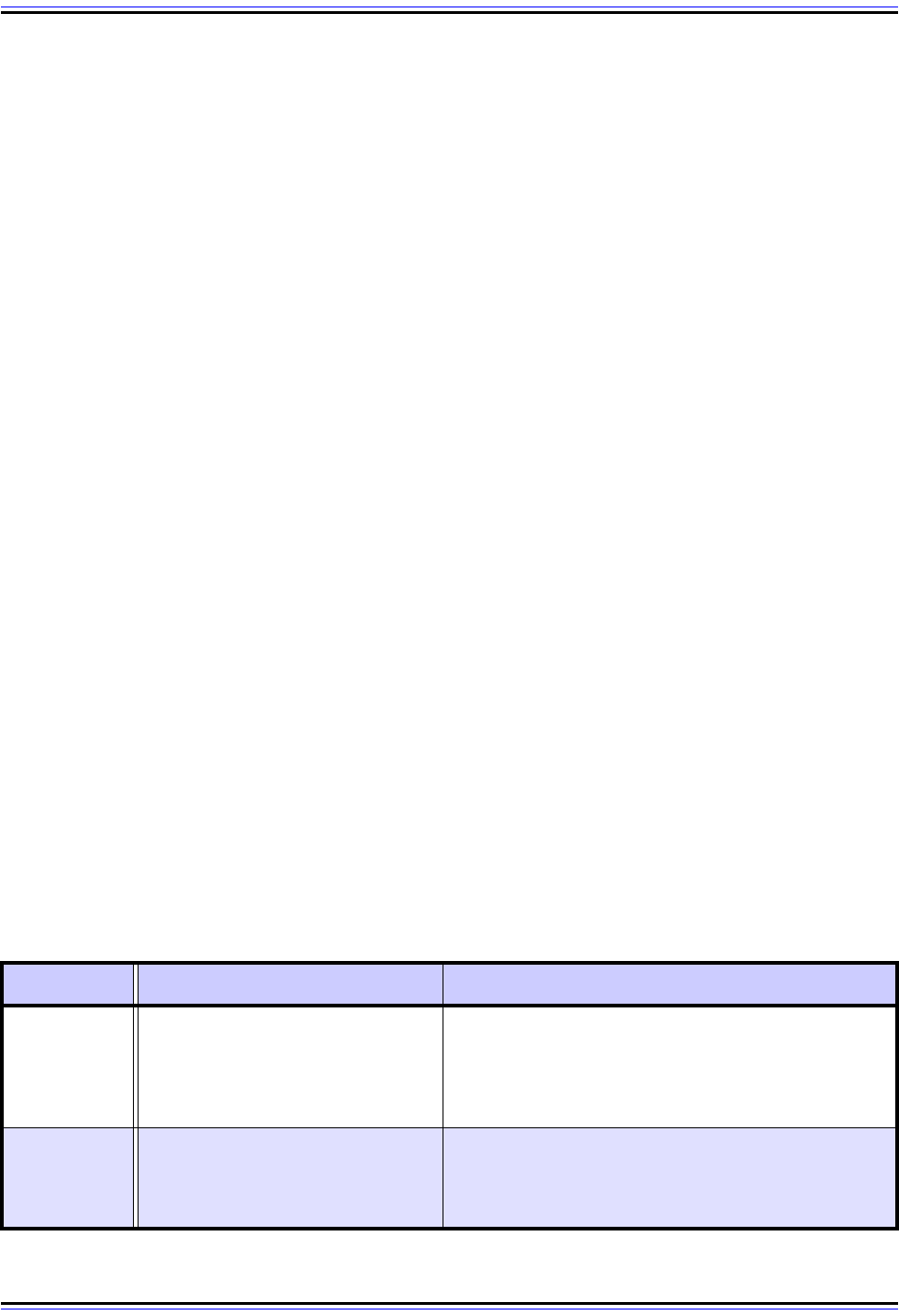
The TCP/IP Guide - Version 3.0 (Contents) ` 1530 _ © 2001-2005 Charles M. Kozierok. All Rights Reserved.
The content of each element can contain other elements, which causes tags to be nested
within each other. For example, if we wanted to highlight the word “Great” in our title by
displaying it in bold letters, we can add the “<b>” tag as follows:
<title>This Is A <b>Great</b> Story</title>
Each whole HTML document is in fact defined as a single “element” called “html”; the whole
document is enclosed in “<html>” and “</html>” tags. Within this element, the document is
divided into two standard sub-elements that must be present in each document: the head
and the body. The head of the document contains information that describes the document
and how it is to be processed; it most commonly contains the title of the document as
described above. The body contains the actual content of the document. These three
elements define the basic HTML document structure:
<html>
<head>
(head elements go here…)
</head>
<body>
(body elements go here…)
</body>
</html>
The bulk of the document consists of the body elements that are placed between the
“<body>” and “</body>” tags. HTML documents can range from very simple bodies
containing only elements such as text paragraphs and perhaps a few links, to very sophisti-
cated documents that are computer-generated and contain hundreds or even thousands of
nested tags of various sorts.
Common HTML Elements
Table 274 provides a brief description of some of the more common elements used in the
body of an HTML message and the tags that define them, to give you a feel for how the
language works:
Table 274: Common Hypertext Markup Language (HTML) Elements (Page 1 of 3)
Element Example Element and Tags Description
Paragraph
<p>Jack and Jill went
up the hill to fetch a
pail of water…</p>
Delineates a paragraph of text. Note that everything
between the start and end tags will be considered
one paragraph, even if split onto multiple lines as I
have done here; line breaks are not significant in
HTML formatting, only tags.
Line Break
George W. Bush<br>
The White House<br>
1600 Pennsylvania Ave., NW<br>
Washington, DC 20500
Forces a line break. Used instead of the paragraph
tag to present lines close together, such as
addresses.
